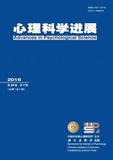Abusive supervision, as a typical example of negative leadership, has significant effects on employees’ mentality, behavior, and performance. Therefore, how to address and prevent abusive supervision has become a crucial topic in both academic and business discourse. Based on self-regulation theory, the current project aims to investigate the coping effects of employees’ mindfulness on the negative influence of abusive supervision and explore the preventative effects of supervisors’ mindfulness on their abusive behavior. Specifically, the project will test the moderation of employees’ mindfulness and a mindful-based intervention on the relationship between abusive supervision and employees’ negative emotion, deviance behavior, and performance; data will be collected through a situational experiment, a questionnaire investigation, and an intervention experiment. Furthermore, a diary study will be conducted to examine whether supervisors’ mindfulness can restrain their abusive behavior in the workplace, and a supervisor mindful-based intervention will consider the upper preventative effect and will explore any follow-up effects on subordinates’ emotion, deviance behavior, and performance. The findings of this project will improve the understanding of the role of mindfulness in abusive supervision research, promote research on coping with and preventing abusive supervision, and serve as references for organizational practices.




